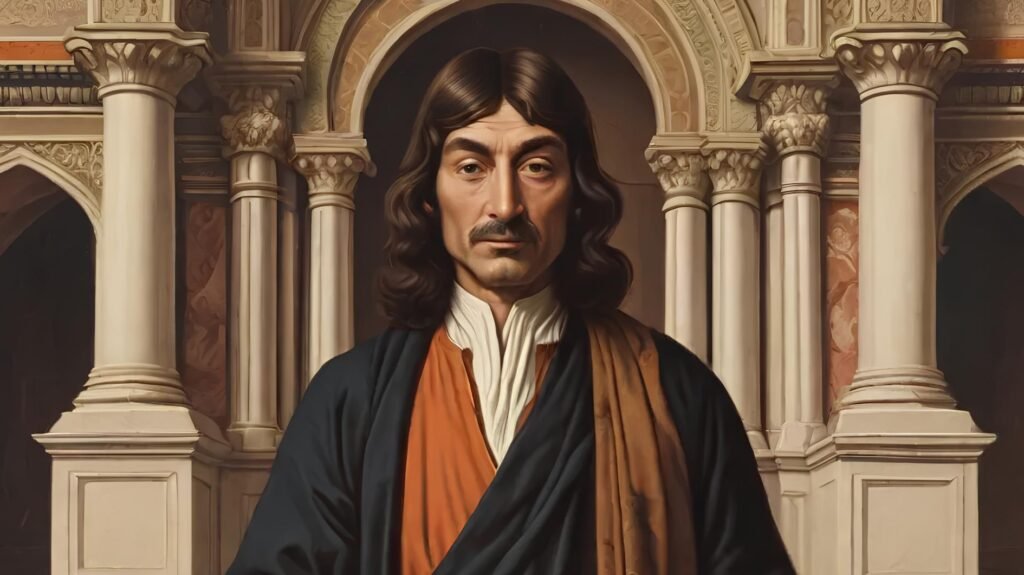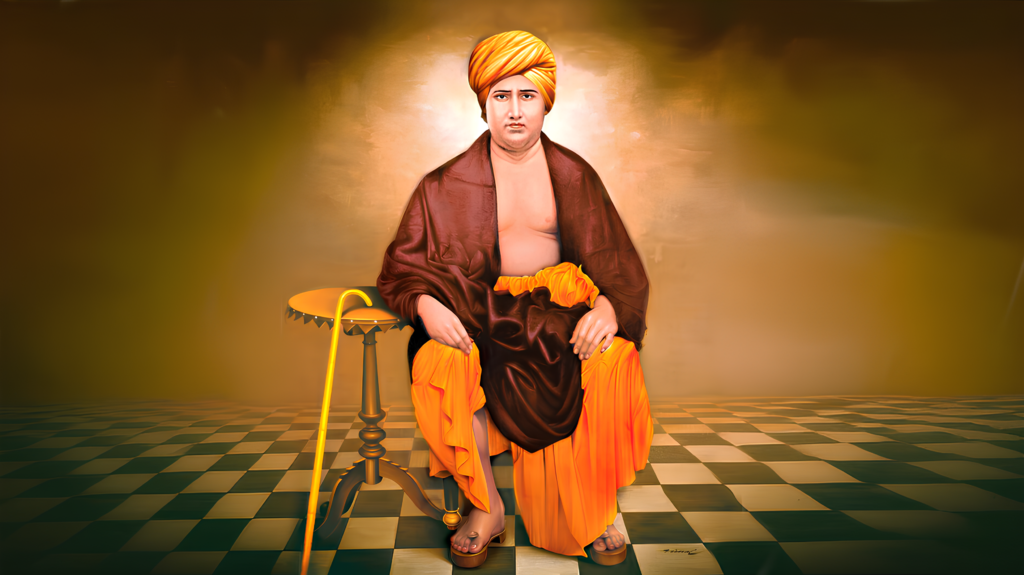What is Tantra? A Journey into the Mystical World of Ancient Wisdom

- What is Tantra? A Journey into the Mystical World of Ancient Wisdom
- Introduction: The Mystery Surrounding Tantra
- What is Tantra Really About?
- The Meaning of the Word ‘Tantra’
- Knowledge, Devotion, and Action: The Three Pillars of Tantra
- The Ancient Scriptures of Tantra: Agama and Nigama
- The Philosophy of Tantra: Shiva and Shakti
- The Path of Kundalini and Chakras
- The Role of Mantras and Yantras in Tantra
- How to Practice Tantra: A Spiritual Journey
- Conclusion: The Path to Unity with the Divine
Namaste Shiksharthis!
Have you ever heard the word ‘Tantra’ and wondered what it truly means? Many people associate Tantra with mysterious rituals, but its real purpose is far more profound and spiritual. Tantra is a path that connects knowledge, devotion, and action into one harmonious system. In this blog, we’ll explore the depth and beauty of Tantra, its role in spiritual awakening, and how it helps individuals realize their connection to the divine.
Introduction: The Mystery Surrounding Tantra
Imagine the vibrant celebration of Navratri, when the streets of India are filled with songs, dances, and prayers to the goddess. As people worship, some may perform special rituals, lighting incense and chanting ancient mantras. These rituals are part of something much deeper, something called Tantra. But sadly, many misunderstand Tantra, thinking it is about magic or strange powers.
In truth, Tantra is an ancient spiritual system that helps us connect with divine energy through a blend of knowledge, devotion, and action. So, what exactly is Tantra? Let’s dive into this mysterious world and uncover its real meaning.
What is Tantra Really About?
Tantra is much more than rituals or meditation—it is a complete system that touches every aspect of life. It is about expanding your mind and understanding your inner self. In Tantra, everything you do—whether it’s learning, praying, or acting—is a way to connect with the divine.
In the Hindu tradition, there are three main paths to spiritual growth: jnana (knowledge), bhakti (devotion), and karma (action). Tantra combines all three paths into one. This means that Tantra helps you think deeply (knowledge), love deeply (devotion), and act with purpose (action).
Unlike some spiritual practices that focus on only one way to reach God, Tantra believes that true spiritual awakening comes from a balance of all three. That’s what makes it so special—it brings everything together in one beautiful system.
The Meaning of the Word ‘Tantra’
Let’s begin with the word itself: Tantra. What does it mean?
The word ‘Tantra’ comes from the Sanskrit root ‘Tan,’ which means to stretch, expand, or grow. Tantra is like a tool that helps expand your understanding and consciousness. Just as democracy is a system that allows people to govern themselves, Tantra is a system that allows us to realize the divine within ourselves.
In ancient texts, Tantra is described as a method that leads to the expansion of knowledge. In the Shaiva tradition, one of the scriptures defines Tantra as, “Tanyate vistarayate jnanam anena iti tantram”, which means, “That which expands knowledge is Tantra.”
Tantra has been practiced not only in Hinduism but also in other spiritual traditions like Buddhism. This shows how universal its teachings are.
Knowledge, Devotion, and Action: The Three Pillars of Tantra
Tantra is a blend of three powerful paths: knowledge, devotion, and action. Let’s explore each of these pillars:
1. Jnana (Knowledge): Tantra teaches us that true knowledge is understanding the divine. This knowledge is not just found in books but through deep meditation and self-realization. In Tantra, the knowledge we gain helps us see the universe as a reflection of the divine power of Shiva and Shakti.
2. Bhakti (Devotion): Just as people worship gods and goddesses with love and devotion, Tantra also focuses on devotion to the divine. One of the main deities worshipped in Tantra is Shakti, the powerful feminine force of creation.
3. Karma (Action): Actions like yoga, meditation, and rituals are a vital part of Tantra. Through these actions, one can align their mind and body with the divine. In this way, Tantra does not separate the physical world from the spiritual but sees them as connected.
The blending of these three paths makes Tantra a unique and all-encompassing spiritual journey.
The Ancient Scriptures of Tantra: Agama and Nigama
To understand Tantra fully, we need to look at the ancient scriptures where these teachings are found. The two most important kinds of scriptures in Tantra are the Agamas and Nigamas.
Agama: This word comes from the root ‘gam,’ which means movement. Agama refers to knowledge that comes from experience, not just from reading or hearing about it. This is because Tantra believes that true spiritual knowledge can only be understood through direct experience, not just words.
Nigama: On the other hand, Nigama refers to the description of experiences. While Agama is about what you feel and experience, Nigama is about putting those experiences into words.
Tantra relies heavily on Agama, believing that the spiritual truths are so profound that they cannot be fully described in words. This is why Tantra is often called a “mystical” path—it’s something you must experience to understand.
The Philosophy of Tantra: Shiva and Shakti
The philosophy behind Tantra is based on the cosmic relationship between Shiva and Shakti. According to Tantra, Shiva represents pure consciousness, while Shakti represents energy and creation. The universe, according to Tantra, is a play between these two forces.
Within each one of us, there is a spark of this divine energy. But in our everyday lives, this energy is dormant or contracted, making us forget our true divine nature. Tantra aims to help us expand this energy, so we can remember and reconnect with the divine source.
One of the fascinating aspects of Tantra is its belief in the panchakrityas, or the five cosmic activities that both Shiva and living beings perform:
1. Creation (Srishti)
2. Maintenance (Sthiti)
3. Destruction (Samhara)
4. Concealment (Tirobhava)
5. Revelation (Anugraha)
These five actions explain how the universe comes into being, how it is sustained, and how it eventually merges back into its source. Similarly, these processes happen within each one of us at a smaller level.
The Path of Kundalini and Chakras
One of the most well-known aspects of Tantra is the concept of Kundalini and the Chakras. But what do these terms mean, and how do they work?
Kundalini is the spiritual energy that lies dormant at the base of our spine, waiting to be awakened. When this energy is awakened, it travels up through our body, passing through seven energy centers known as Chakras. Each chakra has a special role in our spiritual growth:
1. Muladhara (Root Chakra): The foundation of physical and mental stability.
2. Svadhishthana (Sacral Chakra): The seat of creativity and emotions.
3. Manipura (Solar Plexus Chakra): The source of personal power and confidence.
4. Anahata (Heart Chakra): The center of love and compassion.
5. Vishuddha (Throat Chakra): The expression of truth and communication.
6. Ajna (Third Eye Chakra): The center of intuition and insight.
7. Sahasrara (Crown Chakra): The ultimate connection to the divine.
As the Kundalini rises through these chakras, the practitioner gains deeper spiritual awareness. The ultimate goal is for the Kundalini to reach the Sahasrara chakra, where the individual consciousness merges with the universal consciousness, symbolized as the union of Shiva and Shakti.
The Role of Mantras and Yantras in Tantra
Mantras and yantras are two powerful tools in Tantra that help focus the mind and energy.
1. Mantras: These are sacred sounds or syllables that carry spiritual power. In Tantra, mantras are used to awaken the Kundalini and focus the mind. For example, the famous mantra Om is believed to represent the entire universe and is used to connect with the divine.
2. Yantras: These are geometric designs that represent different aspects of the divine. Meditating on a yantra helps focus the mind and connects the practitioner to the energy it represents.
Both mantras and yantras are used as aids in meditation and spiritual practice to guide the individual closer to enlightenment.
How to Practice Tantra: A Spiritual Journey
Practicing Tantra is not just about reading or learning—it’s about experience. Here are some steps to begin your journey into Tantra:
1. Start with Knowledge: Learn about the principles of Tantra. Read about Shiva, Shakti, and the various scriptures like the Agamas. The more you know, the deeper your practice will be.
2. Use Mantras and Yantras: Begin with simple mantras like Om and focus on a yantra during meditation. These tools will help you concentrate and direct your energy.
3. Awaken the Kundalini: Through yoga and meditation, work on awakening your Kundalini energy. Begin with basic yoga postures and breathing exercises (pranayama) to channel energy through your body. Focus on each of the seven chakras, starting from the Muladhara (Root Chakra) and working your way up to the Sahasrara (Crown Chakra). Remember, this is a gradual process, and patience is key.
4. Balance Action, Devotion, and Knowledge: In your daily life, try to integrate the three pillars of Tantra—knowledge, devotion, and action. For example, study spiritual texts (knowledge), practice selfless service (action), and offer devotion to the divine in any form you choose (bhakti). Tantra emphasizes balance, so none of these aspects should be neglected.
5. Understand the Role of Rituals: Tantra often involves rituals, but these are not just for show. Every ritual in Tantra is designed to focus the mind and connect with higher energies. These could include lighting a lamp, offering flowers, or chanting mantras. Rituals help you establish a sacred space where your mind can calm down and focus on spiritual growth.
6. Self-Reflection and Meditation: Spend time daily in self-reflection. Meditation is a cornerstone of Tantric practice, helping to still the mind and awaken the inner energy. Whether you use breath awareness or chant a mantra, meditation will bring you closer to realizing the divine within.
7. Seek Guidance: Tantra can be a complex system to navigate on your own. Traditionally, a guru or teacher would guide a practitioner through the various stages of Tantra. If possible, find a mentor or a trusted spiritual teacher who can help you understand the deeper aspects of Tantra and guide you through its practice.
Conclusion: The Path to Unity with the Divine
Tantra is not merely a mystical practice wrapped in secrecy—it’s a powerful, structured system for spiritual growth. By balancing knowledge, devotion, and action, and by awakening the Kundalini energy through meditation, rituals, and self-awareness, Tantra offers a complete spiritual path that leads to unity with the divine.
For both young and old, the teachings of Tantra provide wisdom that helps us understand the universe and our place within it. Whether you are just starting your spiritual journey or have been on the path for years, Tantra has something to offer. It teaches us that the divine is not something distant, but something within each of us, waiting to be awakened.
In the words of the ancient Tantric texts, the journey of Tantra is the journey of remembering who we truly are—divine beings with infinite potential. Through dedicated practice, patience, and a heart open to the divine, we can each experience the awakening that Tantra promises.
So, as you move forward, embrace the beauty of Tantra as both a philosophy and a way of life. May this sacred system lead you closer to understanding the power of Shiva and Shakti within you, and may you find the unity and peace that Tantra offers.



whoah this weblog is wonderful i really like reading your
posts. Stay up the good work! You understand, a lot of individuals are hunting round for this info, you can help them greatly.
That is a really good tip particulazrly to those
fresh to the blogosphere. Brief but very precise
info… Appreciate your sharing this one. A mhst read post! http://boyarka-Inform.com/